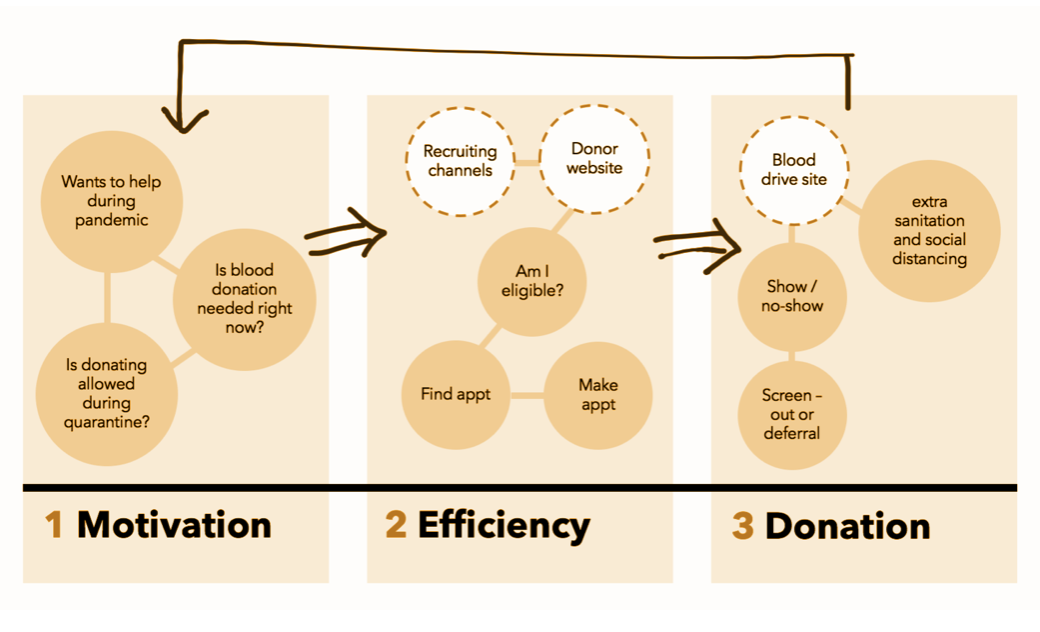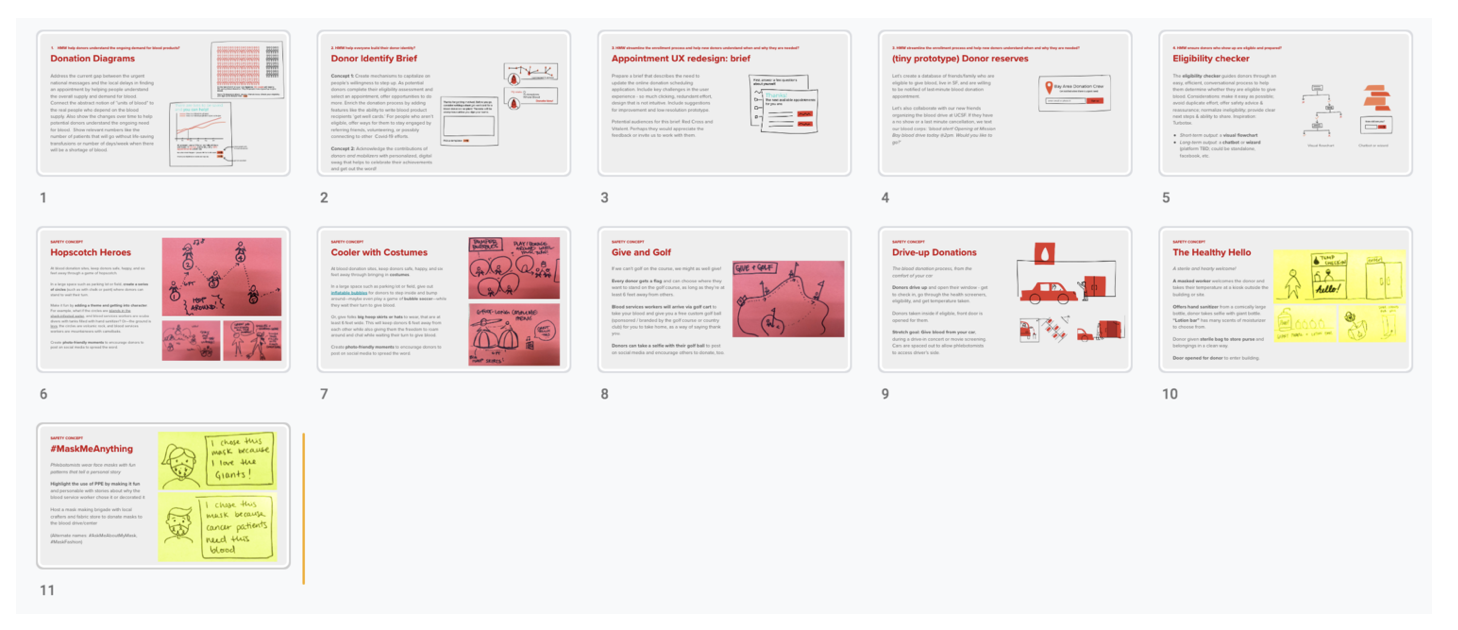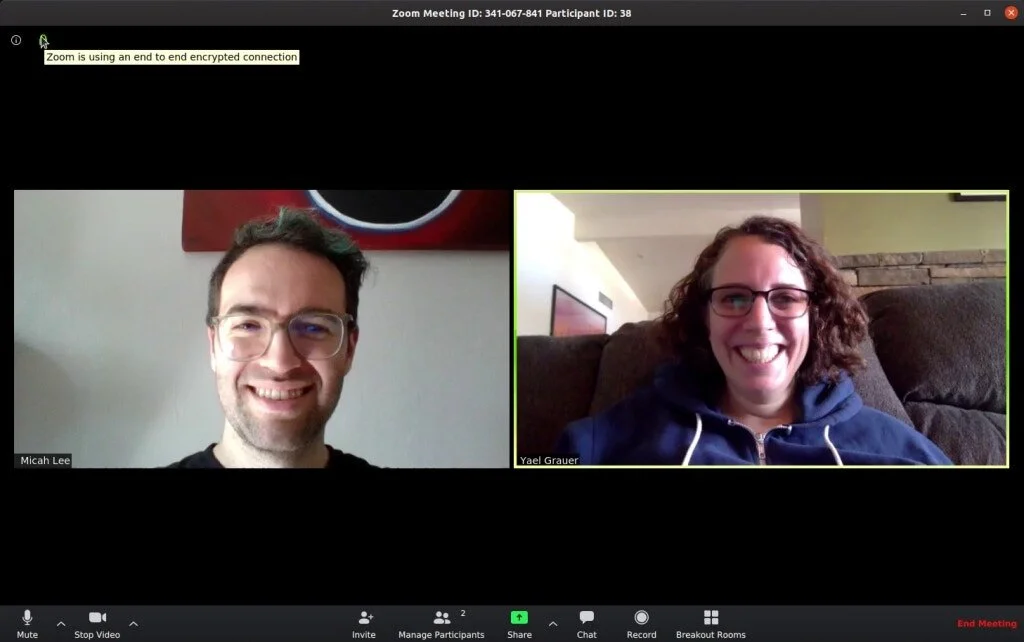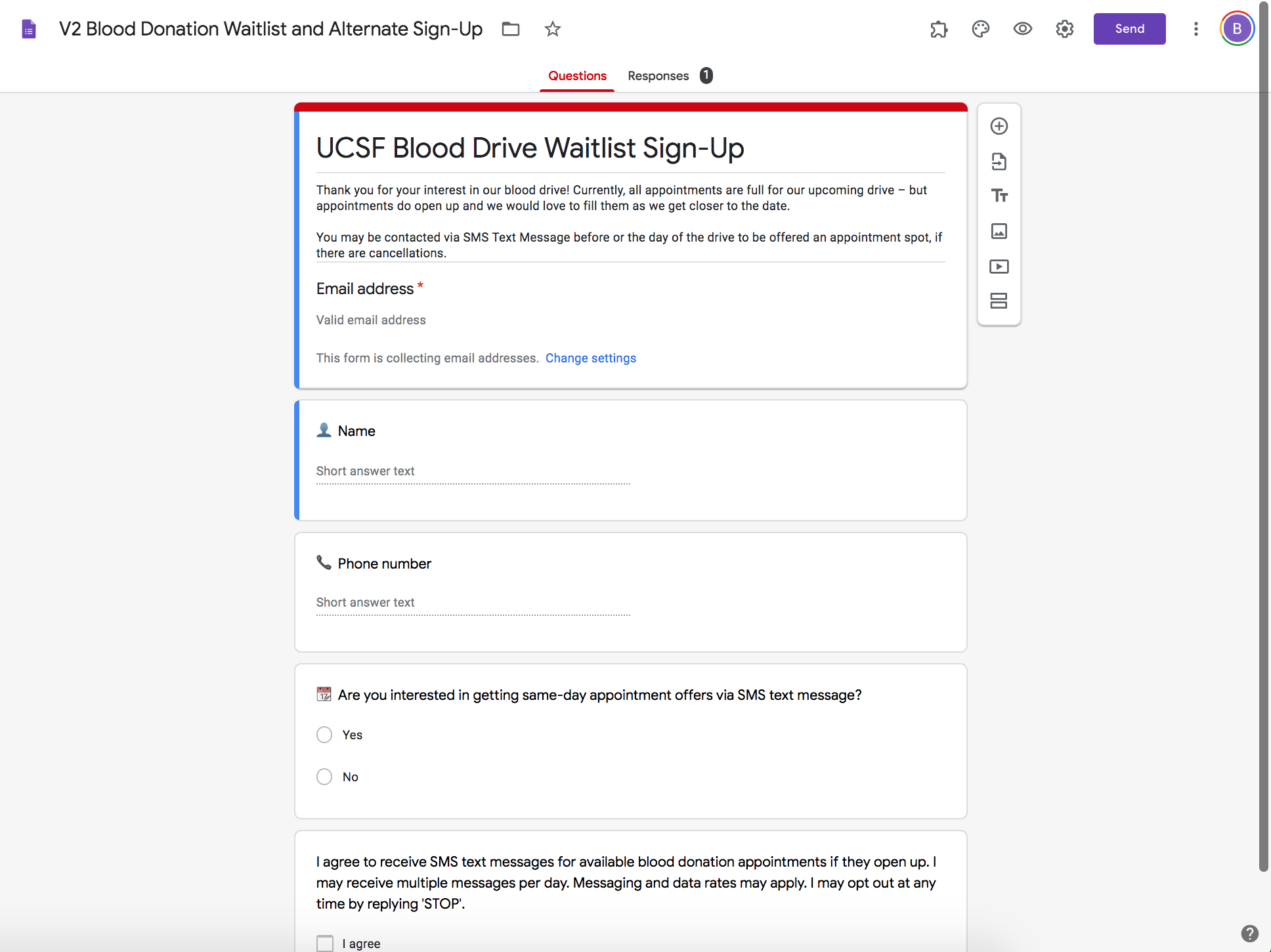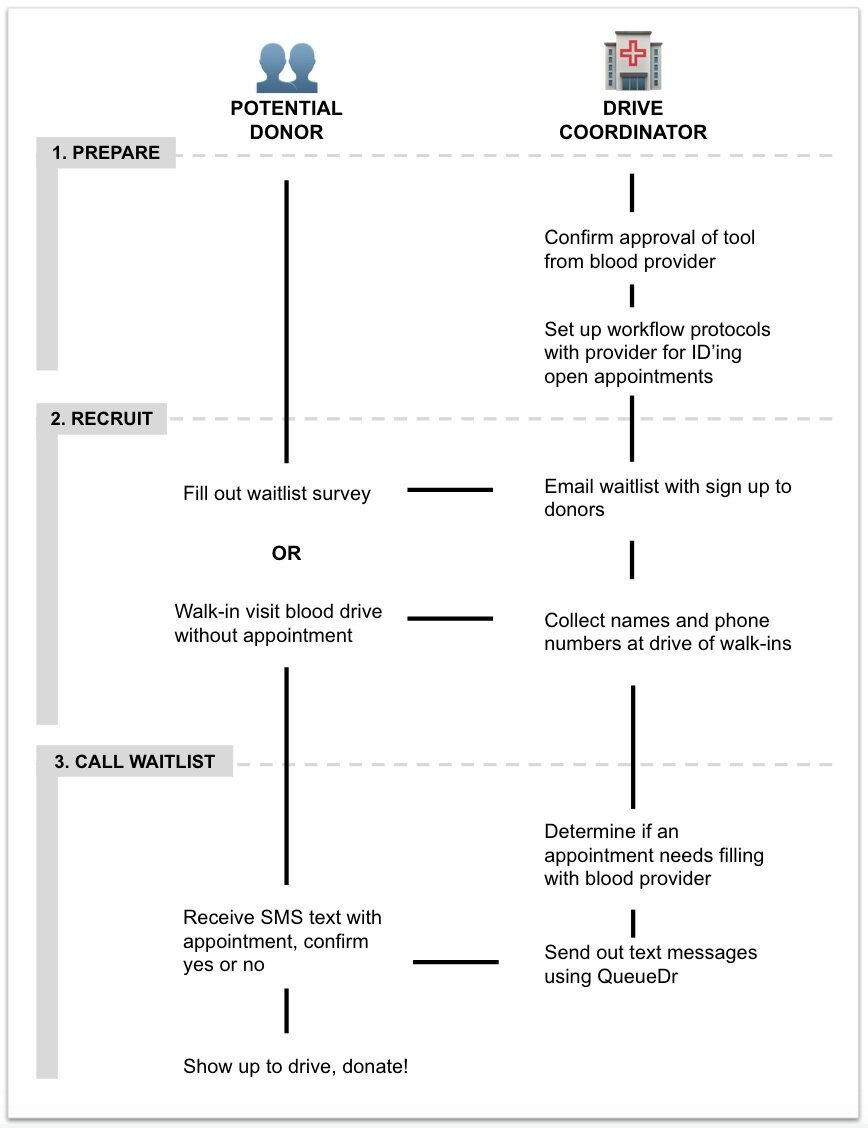Redesigning Blood Donation in a Pandemic
A rapid design and research project with UCSF and the Emergency Design Collective.
✨ Context and Foundational Research
During the COVID-19 pandemic, shelter-in-place orders led to decreased blood donations, causing a national shortage. Our team of designers, researchers and medical professionals investigated what could be done to help. First, we identified opportunities to improve blood donation during the pandemic by conducting:
🚑 Digital Waitlist for Blood Donation
I led refinement and prototyping for the following product idea that came out of our brainstorm:
Goal: fill last-minute cancellations at blood drives to maximize their capacity.
Project duration: 4 weeks
My role: UX researcher
😷 The Problem
Over 35% of donors cancelled same-day at UCSF blood drives in April 2020.
Only 71% of those cancelled appointments were filled last-minute, leaving 10% of total appointments empty.
(Study: NEJM Catalyst)
Expert interviews revealed that overbooking or walk-ins don’t work in a pandemic to avoid crowding, which turns away many highly motivated donors. We aimed to give coordinators an “SMS waitlist” to fill last-minute openings.
🔎 Research Goals
To inform how to design and implement such a service, we sought to understand:
How might blood drive coordinators need to manage a donor waitlist?
How might a waitlist fit into existing blood drive workflows?
How are blood donors recruited?
📊 Research Methods
I conducted interviews with relevant stakeholders, first broadly to understand the blood donation ecosystem. Sacrificial concepts were created based on interviews and used to get more detailed feedback from targeted stakeholders involved with blood drives. Prototypes were taken into the field for live testing and in-context observation.
💡Insights & Design Opportunities
Insight #1: Blood supply partners may be wary of unfamiliar technology
a 1-page summary that explains the tool and addresses privacy concerns
Drive coordinators work closely with Blood Service Providers – who were cautious about donors’ information privacy and security when asked about using an SMS waitlist system. Their unfamiliarity with the technology impeded coordinators from getting buy-in and approval to use such a tool.
Design opportunity: provide Blood services group with information on how the SMS waitlist will work, for instance a “one-pager” detailing how information is stored and how the tool will be used in practice.
a survey that allows potential donors to opt in to being on the waitlist
Insight #2: Donors are turned away when booking online and at the door
Coordinators experienced getting a surplus of emails of people asking to donate, when spots were filled. Then day-of, many people stop by without appointments.
Design opportunity: have an extensible waitlist solution that can be used in multiple touch points - during pre-drive recruiting, and on the day of the drive.
Insight #3: Recruiting replacement donors is time intensive, especially during a busy blood drive
a mockup of a tool that would automate the task of contacting multiple donors at once
One of our volunteers spent 4 hours going through our waitlist calling each person to see if they could take the spot. It wasn’t a good use of time. – paraphrase from a blood drive volunteer coordinator
Design opportunity: automate steps of the recruiting process that happen on the day of the drive - like sending text messages, selecting who to reach out to, and confirming the appointment.
Insight #4: Social distancing protocols impede tracking open appointments & walk-ins arriving.
Because the steps of the blood drive are physically spaced out, it not clear when a donor fell through and an appointment needed to be filled. The same was true for tracking walk-ins: since temperature checks happen outside the facility, walk-in donors without an appointment may get turned away before reaching the scheduling check-in desk. The distance also made it hard to streamline coordinating with the blood provider supervisor to determine the drive’s capacity and if a replacement donor should be found, and for what time slot.
Design Opportunity: set up workflow for funneling appointment openings to the waitlist coordinator, as well as when walk-in arrive. Clarify with blood provider beforehand who at the blood drive should report appointment openings - i.e. volunteers manning any of: temperature check screen outs; health screening deferrals; check-in desk cancellations; phlebotomist unable to draw blood; no-shows and cancellations.
✏️ Prototype Design
I investigated what off-the-shelf tools could be used to fulfill these design opportunities and be used at a blood drive for waitlist management. While apps used for hospitality (i.e. restaurant waitlists) seemed promising, a landscape analysis approach revealed they lacked automated features, or were prohibitively expensive to test. We found QueueDr, a tool for outpatient clinic appointment management, to have the desired features, using SMS to ping the waitlist all at once to see who is available at the offered time.
Landscape analysis of possible SMS tools
⭐️ Final Design
Service design workflow overview for setting up and running a SMS waitlist, consisting of 3 phases:
🎯 Impact
One-pager was successful for getting approval to use QueueDr by the blood provider at the UCSF blood drive
The prototype concept garnered attention of a national non-profit interested in partnering to test the service design at local blood centers.
Team members and collaborators: Abbe Don (project leader), Ben Alpers (researcher), Katie McCurdy (designer) Katie Kirsch (designer), Jess Hawkins (medical student/designer), Anya Greenberg (medical student), Hope Schwartz (medical student), Josh Feler (doctor and designer)



